#disabled history
Text
Queer history and the history of disability are inherently connected. Beyond the myriad of queer disabled people throughout history, the medicalization of queer people has existed for a long time and continues to this day. This means that a lot of the abuses of disabled people have overlapped onto the queer community, and ideally this would give queer people a greater understanding and ability to stand in solidarity with the disabled community. In practice, this often isn’t the case. Eugenicist beliefs, ableist rhetoric, and a deep fear of aging and losing access to an abled body, are all things that run rampant within the queer community. It is past time to do better.
There is so much to learn from the people sitting on the intersection, and the queer people who have been forced through the medical system because of their queerness. Queerness and disability are connected, and that’s a strength for both communities. Within queer history is the history of disability and within the history of disability is queer history. To learn one is to learn the other, and let that be the joy of it.
3K notes
·
View notes
Text
Being a history nerd makes this game fun in a way people use it as an ice-breaker don’t tend to like.
I have so many more examples.
(Changelings wasn’t actually common at all in medieval times, but it’s still POSSIBLE so no thank you. I like showering everyday)
1K notes
·
View notes
Text
My sister found and gifted me this book from 1978, which is surprisingly woke for its time.
For reference, Section 504 of the Rehabilitation Act passed in 1973. The last ugly law was repealed in 1974. The ADA wasn’t signed into law until 1990.
I loved seeing this woman with arthritis using the same type of assistive device I use for my arthritis
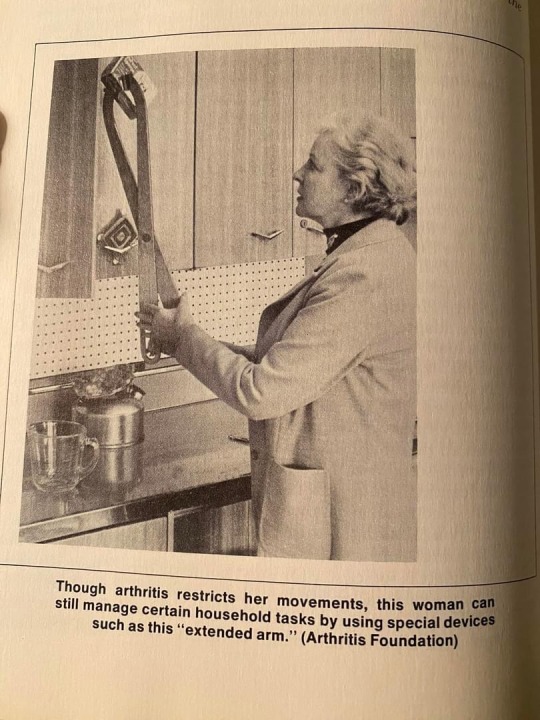

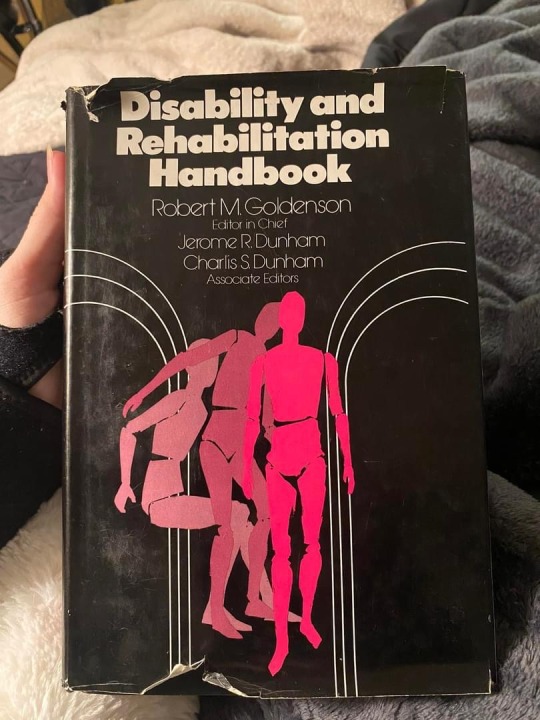
#chronically couchbound#disability#disabled#cripplepunk#cripple punk#disabled pride#disability pride#disabled liberation#disability and rehabilitation#ada#section 504#disability rights#disability history#disabled history
53 notes
·
View notes
Note
tbh: you should just take all of that first thread out of the oppenheimer post. it's a little bit of truth (a couple dozen families of hispanic homesteaders had their land seized via imminent domain and were unjustly compensated) coupled with a *lot* of b.s. or exaggeration (their livestock were SHOT, they were FORCED to work in berylium mines, white workers got protective gear but hispanic ones didn't, loyda martinez sued because of the beryliosis, etc. etc.)
Thank you for telling me. I only did a general check on whether the issue was real instead of whether each claim was true. My bad. I was only able to do a cursory Google search on those claims, which didn't turn up anything, but Google is also pretty unreliable now. I'm beginning to doubt whether Alisa is a good faith actor though, which is a shame because it sabotages the surfacing of the violence done to New Mexico's Hispanos. I disabled reblogs on the post until I could look into it in-depth.
In the meantime, here's a source for the population impact and infant mortality of people caught downwind of the Trinity test:
Here's one about an NYC vigil held for the New Mexico people affected by The Manhattan Project's nuclear tests.
“They’ll never reflect on the fact that New Mexicans gave their lives. They did the dirtiest of jobs. They invaded our lives and our lands and then they left,” Tina Cordova, a cancer survivor and founder of a group of New Mexico downwinders, said of the scientists and military officials who established a secret city in Los Alamos during the 1940s and tested their work at the Trinity Site some 200 miles (322 kilometers) away.
And by far the most blood-curdling thing I found:

Jesus Christ. There's a book called The Plutonium Files written about the experiments conducted for The Manhattan Project. From the Wikipedia article:


What. The fuck. I'd never be lax about unverified claims, but you can see why shooting livestock and the forced labour of native landholders doesn't stretch believability to a lot of people.
Here's a very detailed but easy to read pdf about the experiments and who spearheaded them. I'm ADHDing my way through it, but it does include Oppenheimer's own proximity to the trials.
#anon#asks#oppenheimer#new mexico#colonization#nuclear testing#the manhattan project#ableism#torture#world war ii#military industrial complex#war propaganda#human rights violations#disabled abuse#disabled history#cw: torture#cw: child abuse#the plutonium files#human experimentation#hispanos#indigenous rights#colonial violence#imperialism#knee of huss
47 notes
·
View notes
Text

Honestly this looks awesome. I wish a version built of light modern materials possible to get now as I keep dislocating my shoulders self-propelling in my manual chair and not only are powerchairs incredibly expensive but they’re very difficult to get into places and difficult to control with finesse - when I had my old one I was always afraid of running over small children and dogs 😞
I’ve seen designs for something similar aimed at folks in developing countries where there’s not much access to power, but it only seems to be the plans available and I don’t have the energy or expertise to build one myself.
36 notes
·
View notes
Text
"Dwarves, just like fairies and elves and leprechans, really represented the darkness at the heart of human beings. It's like we want to hive off the darkness in ourselves and give it to some other group of people. We can't aknowlege or bear the fact that we're greedy, or we're immoral, or that we're conniving."
- Professor Diane Perkus, Professor of English Literature at Oxford

Above: art of Arthur Rackham
15 notes
·
View notes
Text
Adventures in Librarian-ing
Today I read "A Boy and a Jaguar" by Alan Rabinowitz to the Grade 1s.
The story is a true story about a boy with a severe stuttering problem who learns to find his voice in order to help advocate for the rights of animals (he was the first person to study jaguars and to get the jaguar reserve in Belize established).

At the end of the story we talked about what stuttering is and one kiddo asked why the boy was able to talk without stuttering when talking to animals but not to people.
"Well," I answered, "I think he was scared of getting judged when talking in front of people (remember how his teachers judged him at the start of the story?). But he probably felt safe talking to animals because they don't judge. Your dog still loves you even if you yell at it when you're mad. They'll still ask for belly rubs and kisses."
One kid nodded seriously in agreement and said "They do love belly rubs."
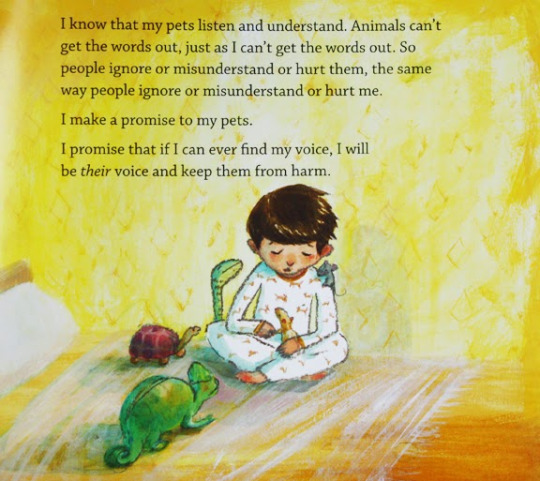
#disabled characters#disabled history#world history#kidlit#school librarian#librarylife#libraryland#school libraries#libraries#the real life of me#canada#elementary school#stuttering#jaguars
15 notes
·
View notes
Text
The greatest showman and the erasure of disabled history (cw: historical ableism and racism)
I haven't watched the greatest showman. It watched a review of it. I won't watch it, I won't even pirate it, because watching a movie like that would be deeply upsetting to me.
This movie is about P.T Barnum, a real person, a horrible, ableist, racist, disgusting person, who should not be celebrated.
In this movie, he's a saviour for disabled "freaks", a word that this movie believes he has the right to reclaim for disabled people.
In reality, he exhibited disabled people and people of colour as "freaks" to be ogled and jeered at, to be abused and discarded when the novelty wore off, to exist for the entertainment of non-disabled whites.
This movie is not about the disabled "freaks". It could never be, because that would require showing the truth about freakshows, and it would give the disabled characters too much agency. This is a tragedy in my eyes, that we never see the stories of the actual disabled people of colour.
It's not about the disabled person who joined the freakshow to provide for their family.
It's not about the disabled black person who was lied to and deceived into joining.
It's not about the disabled slave who was sold into the freakshow.
It's always the non-disabled person who profiting off of the humiliation and abuse they subject their disabled workers and slaves to. And this is portrayed as something inspiring, and something the "freaks" should've been grateful for.
It's never about Joice Heth, or Saartjie Baartman, or Charles Sherwood Stratton, or the indigenous people who were tricked kidnapped or enslaved, or the disabled people who never saw their family again, it's about PT fucking Barnum.
I've seen disabled people find empowerment in this movie, and i'm happy for them. But the greatest showman was not made for disabled people to feel empowered by "embracing their differences". It was made for non disabled people who want to be a saviour to disabled people. It's for non-disabled people who feel guilty about objectifying disabled people, to reassure them that disabled people are actually grateful. It shows disabled people succeeding, but only because they cater to non-disabled people. It's made to justify ableism to non disabled audiences.
This movie is disgustingly disrespectful, to the victims of P.T Barnum. Many of the "freaks" where based on real people. Real people who were often sold into slavery, abused, tortured. Real people who this movie turns into puppets who only exist to make P.T Barnum look like a saint, to fufill non-disabled fantasies of being mother teresa to a disabled kid.
This movie will go down as a disgusting, shameful movie, and I hope the true stories of the ableism and racism in freakshows become widely known, until freakshows and their members are given the respectful and solemn recounting they deserve.
#pt barnum#the greatest showman#racism#colonialism#ablism#ableism#freakshows#history#whitewashing#ablewashing#musicals#Joice Heth#Saartjie Baartman#Charles Sherwood Stratton#disabled history#disabled#disability
22 notes
·
View notes
Text
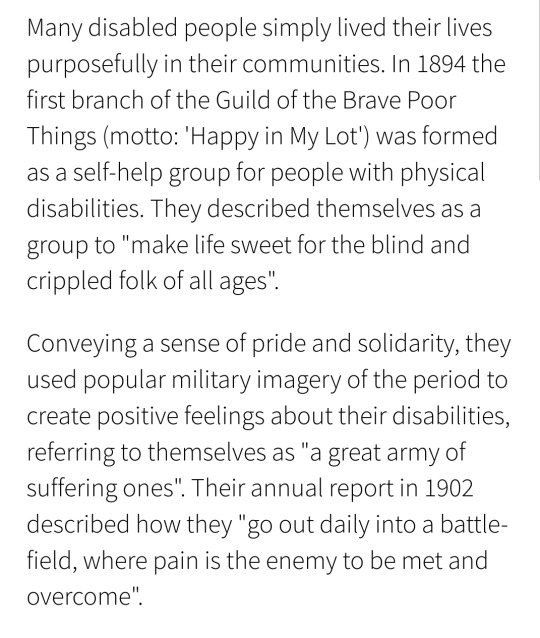
image ID in alt text
source
#cripplepunk#chronic illness#guild of the brave poor things#REPRESENT FUCKEN YEAH LETS GO#disabled history#disability history#historic england
147 notes
·
View notes
Text
In the midst of it all, Eidenberg seemed unable to decide his position. One minute he appeared pitying, the next unreadable, then frustrated.
One by one, speaker after speaker got up, blind, deaf, physically disabled, former addicts, parents of disabled, sharing thoughts, feelings, pain, isolation, anger, heartbreak, telling of years spent trying to get a job, an education, trying to count, trying to matter.
Suddenly Eidenberg abruptly stood up from the table, turned, and ran out the door.
I looked at the congressman. Everyone looked at each other, confused. What had just happened? Did Eidenberg really run out of the room?
Down the hallway, a door slammed.
Congressman Burton jumped up. Red in the face, he turned around and dashed out the door after Eidenberg.
"Get out of there! Come out of there right now! Get out of there!" We heard him yell, kicking the door.
Utter silence.
"Come out! Get out here right now!" Congressman Burton was livid.
Finally, we heard a door open.
Eidenberg walked back into the room, shadowed by Congressman Burton. He looked down, clearly avoiding our eyes. Ashamed.
Fists clenched, Congressman Burton walked behind him, escorting him back to his chair. He stood behind him and waited until Eidenberg had sat down again and then forced him to face us.
The hearing continued on. It was five hours of testimony.
You should all read Being Heumann by disability activist Judith Heumann, btw.
#jokes aside it is so fucking brilliant#disability pride#disability#disability history#disabled history#disabled pride#disabled writers#women's history#women writers#women's history month#disabled women#jewish writers
4 notes
·
View notes
Text
Disability Pride Month!
There is a large intersection between queerness and disability, including marriage inequality, medical abuse, and legal discrimination. The lines between queerness and disability have been practically nonexistent within living memory and both communities can learn from the other as well as uplift each others voices.
As a queer disabled person, I wanted to share some articles about queer/disabled history:
Vaslav Nijinsky
Emmeline Freda Du Faur
Gottfried von Bismarck
Victoria Arellano
Anna Freud
Lou Sullivan
Lesbia Harford
Frida Kahlo
Magnus Hirschfeld
Kristina King of Sweden
Edward De Lacy Evans
(To be clear, not all of these are about queer disabled people, but they all have connection to disability through medicalization, or disability)
Also if you want to support a queer disabled writer, who writes about queer history, please check out:
https://www.patreon.com/queerhistory
or
https://www.paypal.com/paypalme/queerhistory
661 notes
·
View notes
Text
So this isn’t exactly correct, the reason I was trying to get at is “Abled people don’t get taught out history and if they do it’s so bound up in the era of eugenics and ‘charity’ and from an Abled perspective that they can’t consider us surviving earlier than that”, but I am in the midst of an awful 2 day so far series of hemiplegic migraines so my brain is shot to hell.
Disabled people were treated terribly in many cultures and did often have worse lives, but they still had lives and made their own adaptations. This varies from time and place and culture, but disabled people lived before the 20th century and have a history.
Addendum: “Like everyone was disabled” should have been a “significant amount of people would have been disabled by their jobs/general lack of modern medicine by later life and people have always cared for each other so unless your survival was directly going to contradict someone else’s people tended to look after and love each other.”
Just… just look up Burial 9 or Martha’s Vineyard or the Windover Boy or Romito 2. Someone has always cared.
518 notes
·
View notes
Text
On a 2002 board book about Brazil (3)
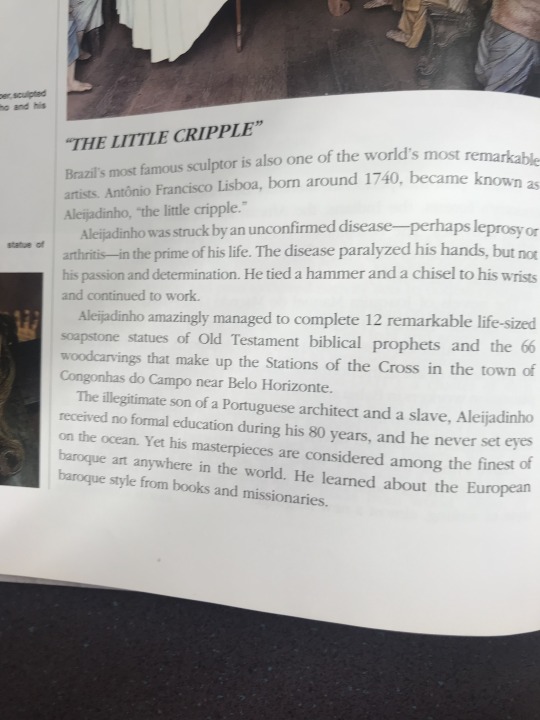
“Brazil’s most famous sculpture is also one of the world’s most remarkable artists. Antônio Francisco Lisboa, born around 1740, became known as Aleijadinho, ‘the little cripple.’
“Aleijadinho was struck by an unconfirmed disease—perhaps leprosy or arthritis—in the prime of his life. The disease paralyzed his hands, but not his passion and determination. He tied a hammer and a chisel to his wrists and continued to work.
“Aleijadinho amazingly managed to complete 12 remarkable life-sized soapstone statues of Old Testament biblical prophets and the 66 woodcarvings that make up the Stations of the Cross in the town of Congonhas do Campo near Belo Horizonte.
“…His masterpieces are considered among the finest of baroque art anywhere in the world. He learned about the European baroque style brown books and missionaries.

“Along with his sculptures, Aleijadinho designed many beautiful churches, each with trademark large, rounded bell towers, altars featuring ornate engravings, and reliefs of angels and saints extending out of ceilings. Several of these churches stand in various cities around the state of Minas Gerais. Two examples are Our Lady of Mount Carmo Church and the São Francisco Chapel. These two churches represent the best of baroque art in Brazil and are considered among the world’s finest. Both of them are found in the historical town of Ouro Prêto, which has been declared a World Cultural Monument by the United Nations.
“Two blocks from the São Francisco Chapel is the town’s monument to Aleijadinho, with his remains buried beneath a marker in a museum church. Some of his wood and soapstone carvings, documents about his career, and the illustrated Bibles he used to study are also displayed in the galleries of the church.”
3 notes
·
View notes
Text
disability activist judy heumman passed away earlier today. she did so much for the disabled community such as advocating for independent living, helped create legislation for the individuals with disabilities education act, and most notably leading the 504 sit in for disability rights. her work has helped me become a better activist myself and the world will not be the same without her. she will be greatly missed
7 notes
·
View notes
Text
youtube
Against Segregation: approaching the British disabled peoples' movement is a short, introductory video looking at one of the most significant but neglected social movements of the 20th Century in Britain. We provide a short overview of the movement's historical development - considering its key stages - as well as brief outlines of the core ideas developed by its radical wing - the Union of the Physically Impaired Against Segregation.
This video draws heavily on Judy Hunt's history of the movement - one of only two activist histories of the British DPM - and from an interview with her on the Prolekult podcast.

Both a free PDF and a paid-for hardcopy of Hunt's history are available from Greater Manchester Coalition of Disabled People here.
Please consider paying for a copy. All proceeds go toward a disabled peoples' activist press.
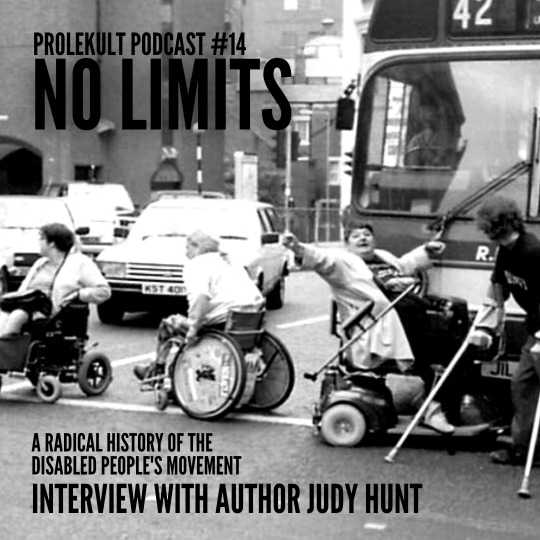
Our full interview with Hunt, which this video features extracts from, is available here.
#disability#disabled#disabilties#liberation#disabled liberation#disabled history#history#Britain#UK#uk politics#politics#theory#leftism#social model of disability#union of the physically impaired against segregation#Youtube
2 notes
·
View notes
Text
disabled people deserve to see themselves in history. disabled people deserve to know about disabled activists and the disability rights and disability justice movements. disabled history should be taught in school.
representation is not just about race and sexuality. when we talk about historical revisionism we should stretch further than just the 1619 project because what we're missing in our history classes is not just Black stories, and especially not just the stories of Black abled men.
tell intersectional histories. let's talk about Jewish disabled activist Judy Heumann. Let's talk about Black Deafblind lawyer Haben Girma. Let's reach past MLK Jr. just a little bit, please?
Signed, a tired history major
#history major#disabled history#this post is throwing a molotov cocktail at a gasoline factory but whatver
11 notes
·
View notes